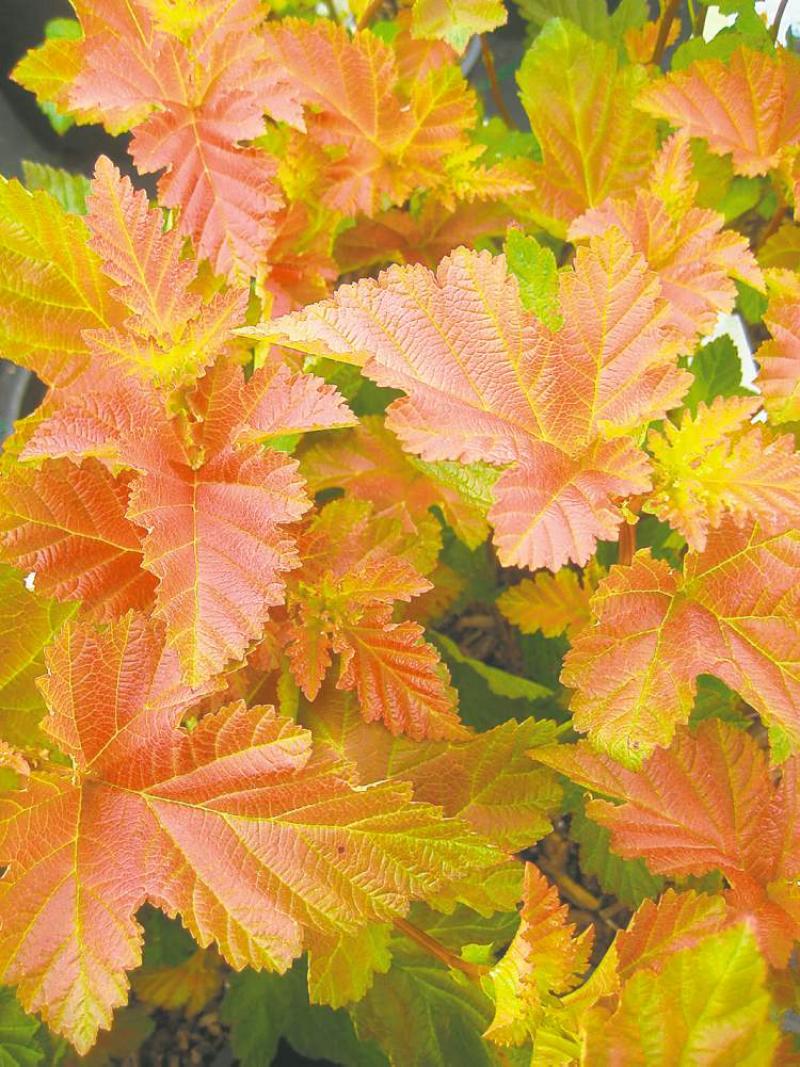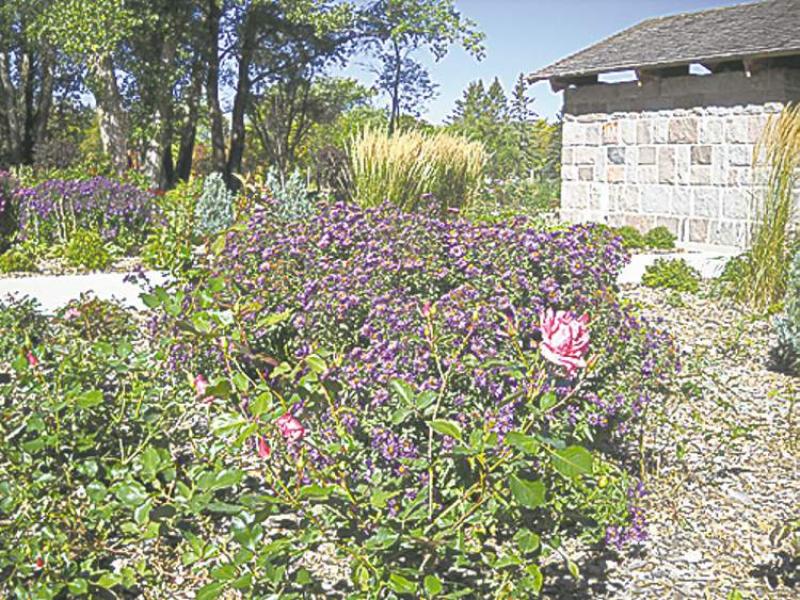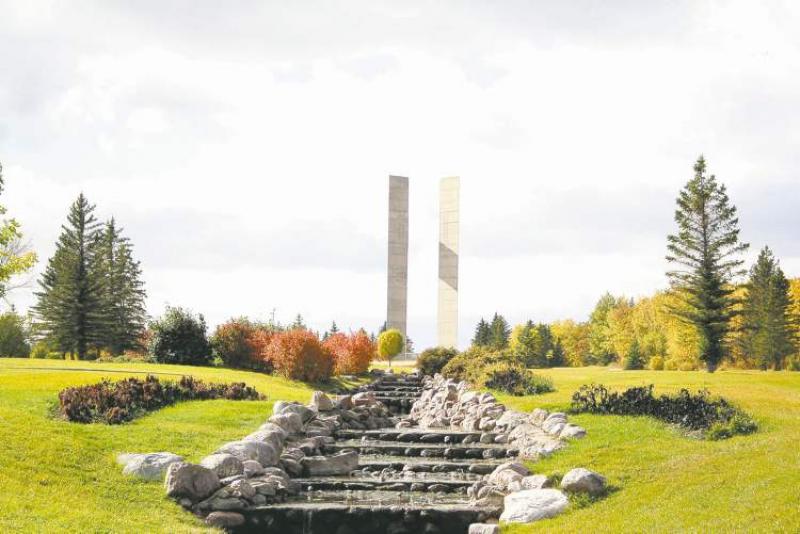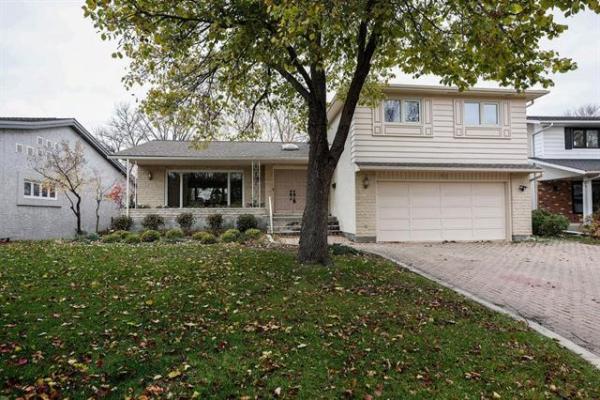



Worth the trip
Fall is a great time for an excursion that takes in the brilliant colours of the season. When did you last visit the International Peace Garden? Music camp, perhaps? The garden is so much more than just summer camp or even the 155,000 flowers that are planted each year.
Located on the Manitoba/North Dakota border 24 kilometres south of Boissevain, the Garden Complex has recently undergone a major renovation that includes thousands of new plantings, paved walkways, a revitalized Sunken Garden and octagonal reflecting pool. Hardy introductions of trees and shrubs, many introduced by Jeffries Nurseries of Portage la Prairie, comprise a living fence, providing inspiration for your home landscape. In addition, visitors will find an expanded Interpretive Centre and a recently constructed Conservatory, which houses an extensive succulent collection as well as tropicals.
Today's contributor is Doug Hevenor, CEO of the International Peace Garden. A graduate of the Niagara Parks Commission School of Horticulture, Hevenor has overseen the dramatic changes to the garden. His dedication to horticulture has earned him a number of awards, including Landscape Manitoba's Project Evergreen Award in 2009 and the Prairie Garden Award for Excellence in 2010.
The owner of just one of the many businesses on both sides of the border that participated in the renovation, Len Friesen, of Len's Landscaping in Winkler, was involved in the installation of plant material and decorative fountains.
"It was great working with Doug and a real honour to be part of such an exciting project," he said.
Admission is $10 per vehicle. Don't forget your camera!
-- -- --
Today, in Dauphin, the Manitoba Regional Lily Society will host its fall bulb sale. Come and talk to the lily experts at Market Place Mall, 1450 Main St. S., 9 a.m.-4 p.m.
Congratulations to Renata Klassen, 2012 recipient of the Prairie Garden Award for Excellence. Visit www.theprairiegarden.ca for more details.
Colleen.Zacharias@gardensmanitoba.com
The air is definitely much cooler now in the evening and at night. With shorter days, we all know another summer has passed. All good things must come to an end but that is fine. So, don't worry about it, fall brings with it a whole new set of things to see and to do. As frost appears here at the International Peace Garden, the fall colour change has kicked in and it's entering high gear, so start planning your trip now.
Our forest is a mix of green, yellow and red with some orange and even purple here and there. Bring your camera with you and get out on the road. Travelling through southwestern Manitoba at this time of year brings some wicked photo opportunities. The blaze of colour along the shore of Lake Stormon makes for a great image. An added bonus is there are no bugs!
During the past few years, we have added some wonderful new trees that offer some additional shades of red and orange, including Autumn Blaze Freeman Maple, Sienna Glen Freeman Maple, Autumn Spire Red Maple, Redwings Tatarian Maple and improved Amur Maple selections. All of these wonderful maples are performing well at the garden and will greatly add to its fall pallet of colours.
In addition, we have added flowering crabs -- Emerald Spire Crabapple, Gladiator Rosybloom Crabapple and Purple Spire Rosybloom Crabapple combined with a unique species, Autumn Splendor Buckeye. All provide incredible summer colour that carries well into fall.
Many of the new varieties of ninebark can also add sensational colour to the fall landscape. We have planted several new introductions, including Centre Glow, Coppertina, Diamond Jubilee, Diablo and the dwarf growing form Little Devil.
Ninebarks (Physocarpus opulifolius) offer many different foliage colour forms. Most types attain a plant height of 2.7 metres and a width of 20 centimetres, with white flowers that bloom in spring and leaves that change colour in fall, providing year-round interest. These shrubs are best planted in full sun, in a well-drained site. I suggest you use these plants as a border or background for perennial or annual flower beds or in foundation plantings of larger buildings.
If you haven't been over for a while, we have a beautiful new Interpretive Centre for you to explore. Constructing a building takes time, money and manpower, and if it's designed with a new concept, then it takes a great amount of calculation, experience and innovation.
The conceptual design was offered by Étienne Gabourey and completed by Guy Préfontaine of GPP Architecture. The architecture is inspiring: The windows help to bring the outdoors in, flooding interiors with natural light and adding a fresh element to its sleek and minimalist style.
Since its opening, hundreds of visitors have commented on the wow factor of the architecture.
Marten Duhoux and his team from Friesen Tokar Architects completed the functional elements of this LEED-designed building. Targeting energy efficiency and sustainability, his team provided a cost-effective solution for the future use of the structure.
In front of the centre is our beautiful Sunken Garden.
It is a giant rain garden that naturally directs and collects surface water. Bordered by fencing to restrict the entry of our hundreds of whitetail deer, the garden provides sanctuary for a cornucopia of herbaceous and woody plants.
The garden features a formal touch, with pathways and walks framing garden spaces and creating different geometrical shapes. The Sunken Garden is located at the intersection of the U.S./Canada border and the Avenue of the Provinces and States. Here, the rows of trees and shrubs look very formal. You will be greeted with lines of flowering crab trees forming alleys along the edge of the walkways.
The Sunken Garden is quite symmetrical and has pruned borders that encircle or frame several of the beds, with shrubs such as dwarf Arctic willow, dwarf Pygmy caragana and Alpine Currant as hedging.
Amongst this symmetrical setting we have chosen to capture the more natural or random style of the cottage garden school of design, incorporating a great variety of plants, such as bulbs, perennials, herbs, fruits, trees, shrubs, vegetables, berries, vines and annuals.
Our fall setting is full of aster, late flush roses, Black-eyed Susan and a diverse collection of sedum. I like to think Gertrude Jekyll, one of the most influential garden designers, would enjoy this space. The long and the short of cottage garden design is "Do whatever you think looks best. Remember, if it doesn't work out, you can always dig plants up and move them."
In the back of our Interpretive Centre you'll find the home of the Vitko Collection of Succulent Plants. I still find it hard to believe that one man, Don Vitko, collected all these remarkable plants and accomplished it on the windswept prairie of North Dakota... amazing!
Currently we have 3,000 square feet of display highlighting plants from the southern cape of Africa, the Island of Madagascar and the Americas. In spring of 2013 we will open another 7,000 square feet of display space allowing the public to see the entire collection of more than 7,000 individual plants.
While you're with us, why not visit our café, where you can sit and contemplate the day while you enjoy one of Chef Vili's terrific meals -- comfort food, as he likes to call it.
A visit to the International Peace Garden is more than fall colour or flowers. It's also a spiritual place where you can relax and refresh yourself. Take time to consider why the garden was created and hope we can continue to make the world a peaceful place.




